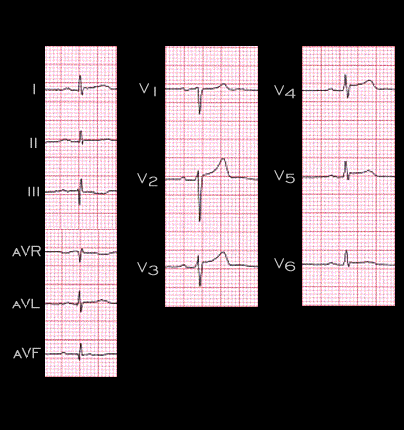
This electrocardiogram was recorded later the same day, following successful angioplasty of the lesion. It shows almost complete resolution of the ST segment elevation. This indicates the ionic and metabolic end-products of anaerobic metabolism which had accumulated in the extracellular space of the ischemic zone when the vessel was occluded were responsible for the ST segment (and TQ segment) changes. When coronary flow was re-established, these metabolic and ionic end products were washed out and the ST segment (and TQ segment) abnormalities resolved.
Note: TQ segment is placed in parenthesis because shifts in the TQ segment are not discernible on the electrocardiogram as recorded by clinically employed ECG machines. Instead, the wave form of each lead is automatically centered on the ECG recording paper. Thus, shifts in the ST segment, TQ segment or both, if in the opposite direction (as with acute ischemia), always appear as changes in the ST segment.
